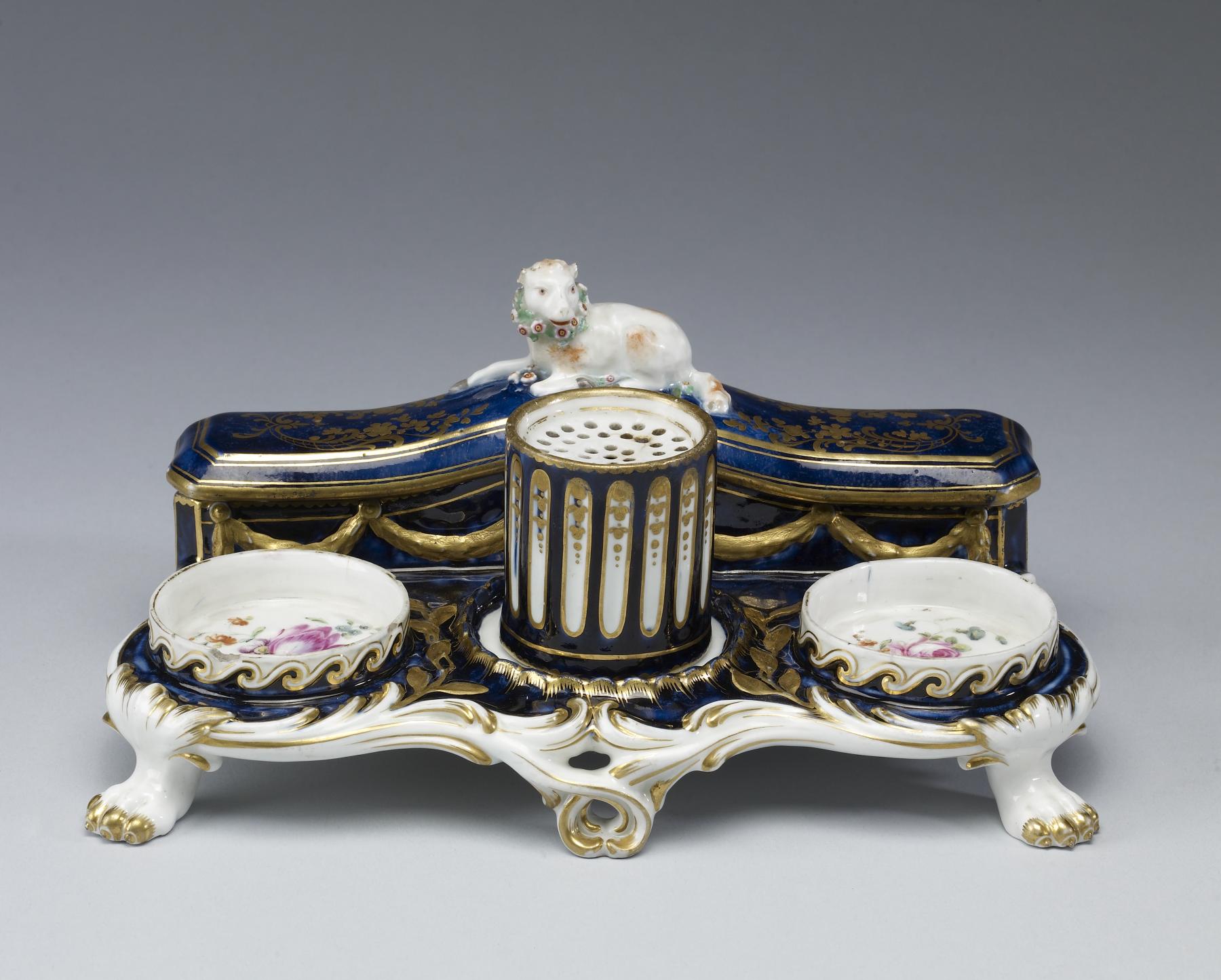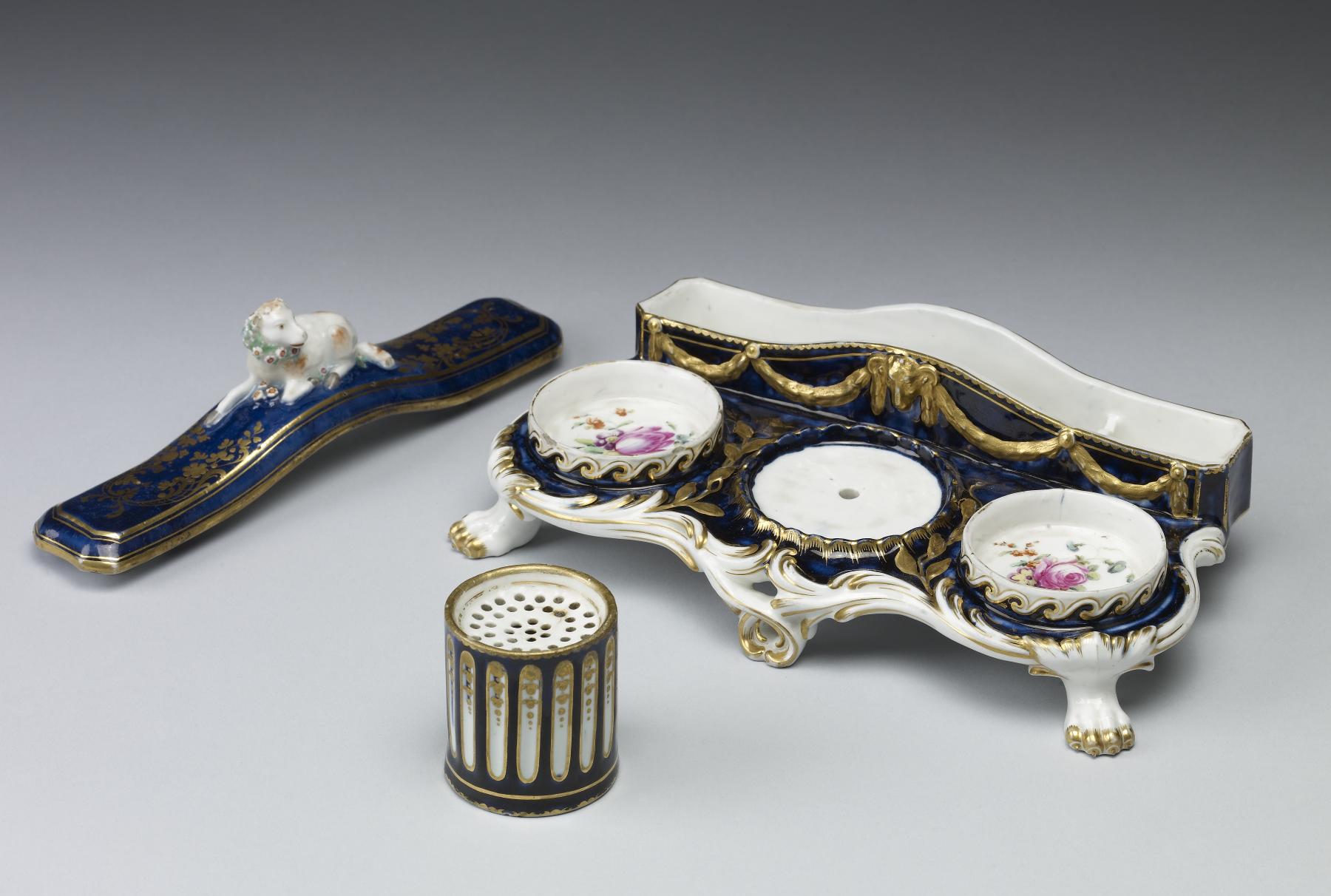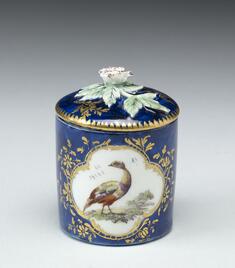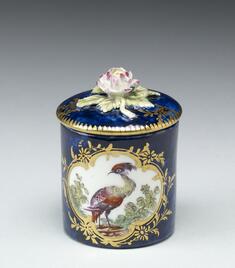Inkstand with Sandbox and Cover for Pen Compartment
(18th and 19th Centuries )
European inkstands were most often made of silver, though examples in pewter, lead, earthenware, and porcelain, like this one, are also known. They were used to hold pens, ink, and other writing implements. These might include a taper stick (a holder for small candles), a pounce box (for sprinkling sand or pounce, a powdered gum, used to dry ink on paper), a wafer-box (to hold wafers used to seal letters), a penknife, and quills. This inkstand, made at the Chelsea manufactory in southwest London, was inspired by examples made in France.
Provenance
Provenance (from the French provenir, 'to come from/forth') is the chronology of the ownership, custody, or location of a historical object. Learn more about provenance at the Walters.
Lady Lavinia Bickersteth, London; George R. Harding, London [date and mode of acquisition unknown]; Henry Walters, Baltimore, 1911, by purchase; Walters Art Museum, 1931, by bequest.
Exhibitions
| 2011 | The Art of Writing Instruments from Paris to Persia. |
Geographies
United Kingdom, England, London (Place of Origin)
Measurements
H: 3 3/4 x W: 8 5/8 x D: 4 3/8 in. (9.53 x 21.91 x 11.11 cm)
Credit Line
Acquired by Henry Walters, 1911
Location in Museum
Not on view
Accession Number
In libraries, galleries, museums, and archives, an accession number is a unique identifier assigned to each object in the collection.
In libraries, galleries, museums, and archives, an accession number is a unique identifier assigned to each object in the collection.
48.842








